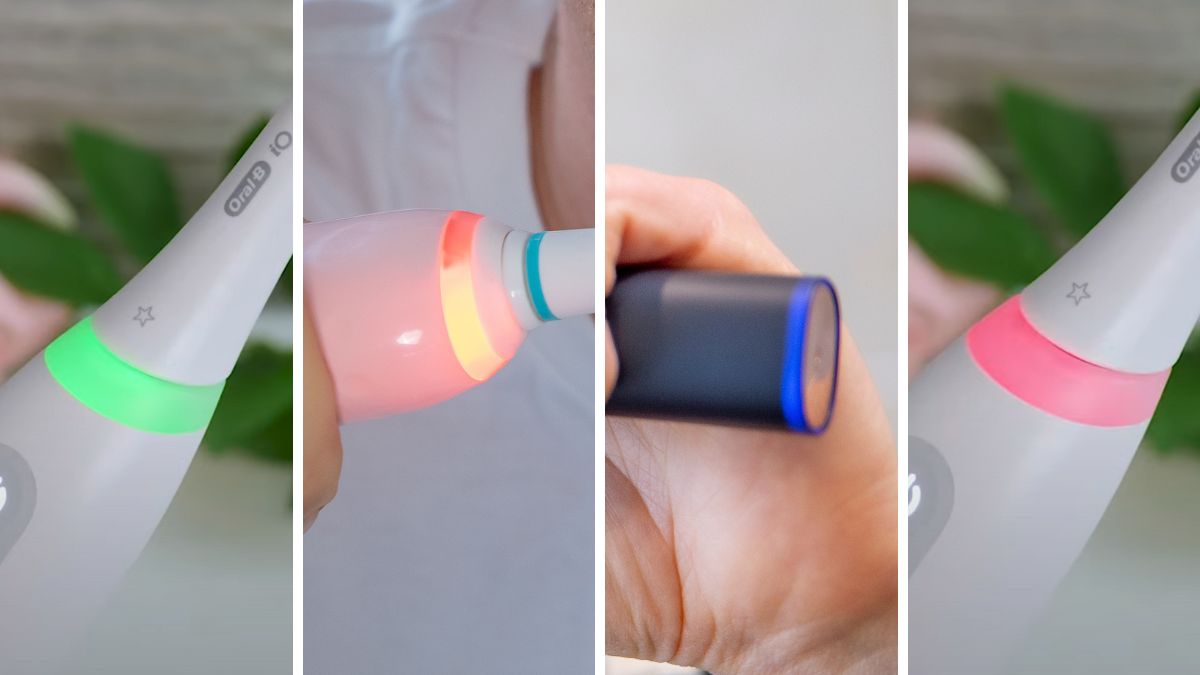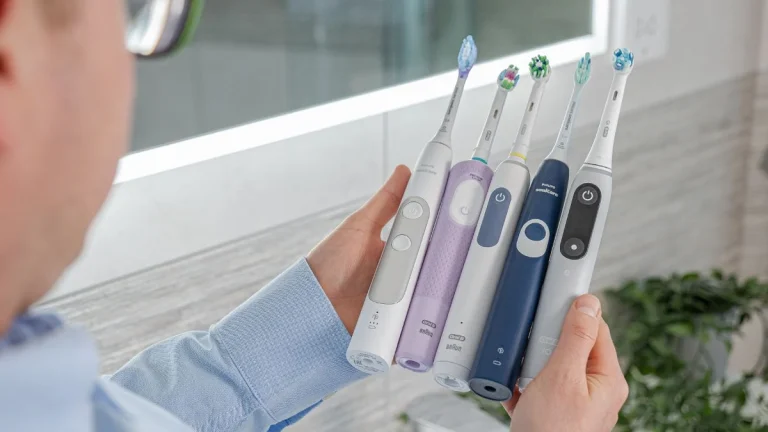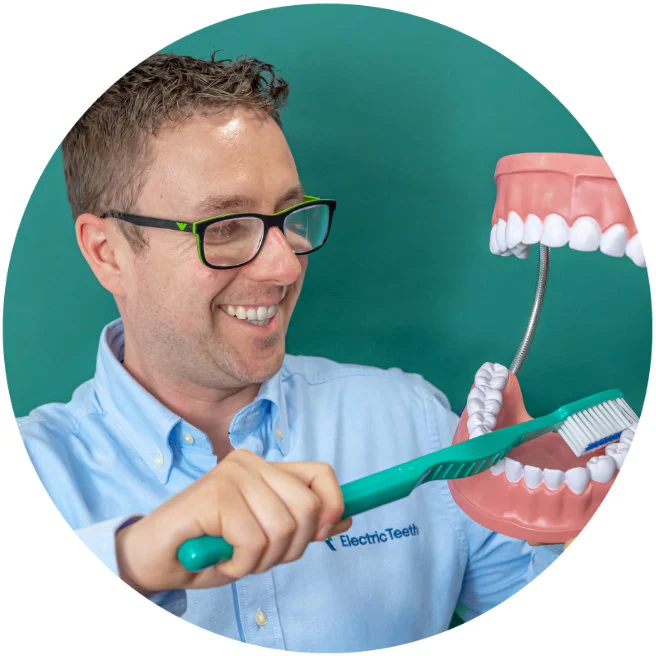
It’s been almost a decade since we first started testing electric toothbrushes and other dental products.
We’ve now tested hundreds of electric toothbrushes and published written and video reviews for the vast majority of them.
Over the years our testing system has evolved based on our own understanding of products and user feedback.
In some respects choosing an electric toothbrush is simple, but in others it isn’t. Experience has taught us that people often like to drill down and compare one or two specific elements of a product.
For this reason, we’ve recently made our scoring more granular. Whereas we used to simply award an overall star rating (out of 5), we now provide an overall score (out of 100), individual category scores (out of 100) in 8 categories, plus an itemised smart features score (out of 100) for applicable brushes.
In the sections below we elaborate on how the scoring system works so that you can understand our scoring system in more detail.
We are in the process of rolling out our new scoring system to existing posts. As it stands, some posts have the news scores inserted and others do not.

The headline scores that we provide
We have intentionally designed our testing process to be simple and straightforward. We test products like you would use them yourself, at home. We want to give you our opinions as fellow users. With our content, you get the same verdict and advice as we would give to our closest family and friends. Whilst we have recently made our scoring system more granular, we provide headline scores to make it easier to compare and assess products.
Overall score
The overall score is based on the sum of scores from 7 sub-categories. The only category score that is not included within this is the smart features score. We explain the reasoning for this below.

Star ratings
The star rating is a visual representation of the overall score. We group the overall score into the following brackets for star ratings:
5 star: 85+
4.5 star: 75+
4 star: 65+
3.5 star: 55+
3 star: 45+
2 star: 25+
1 star: 5+
The vast majority of brushes are rated above 3.5 stars. This is because it is very rare that a brush performs badly enough that it deserves a lower rating. Where this is the case, it tends to be for challenger products that are trying to do something different, like some mouthpiece toothbrushes.
Visually, we round star ratings to the nearest half star and show the true decimal score in brackets. For example:
A score of 4.2 is shown as 4 stars:
A score of 4.9 is shown as 5 stars:
Category scores
We give products a score out of 100 in 8 categories:
- How well it cleans
- How it feels
- Does it have our recommended features
- How long the battery lasts & how it charges
- Price
- Additional items & features
- Manufacturer support & reputation
- Smart features
Within these categories, there are various criteria we used to calculate the score. We explain these in their own sections below.
The individual category scores each have their own weighting and are used as part of a formula to calculate the overall score. The only exception here is the Smart Features score, which does not contribute to the overall score.
This panel shows a live example of our scoring for a product without smart features:
Smart Features is a non-contributing category
At the moment Smart Features is the only category that does not contribute to the overall score that we calculate. This is because not all brushes include smart features, so the score would be skewed if we did include it. Plus, smart functionality does not impact how well a brush can clean your teeth, but does increase the overall price. For this reason, we do not typically recommend smart toothbrushes unless a user is likely to be dedicated to using the features.
We do still provide a Smart Features score and break it down into its own subcategories so that users can compare smart features if desired. The individual scores within the smart features category are also represented by a score out of 100.
If a brush does have smart features, the summary panel for its scores shows a ‘Smart Features’ button, which can be clicked to show our breakdown of the smart features score.

Best, average and worst scores
To make it easy to see how a brush’s scores compare to the full range of products we have reviewed, we show the best, average and worst scores within a pop up. You can access this by clicking the question mark icon next to a category name.

To maintain accuracy among these scores, we regularly update our database to only include brushes that are currently available to buy. We also remove close variations of products, such as special editions or those that have a different model number due to box contents only.
A closer look at the categories we give scores to
We aim to consider as many factors as possible in our testing. Whilst it isn’t possible to make detailed comments in every piece of content, we do consider as wide a range of people as possible. We consider those of different ages, different capabilities, those with all those teeth and those that have had some teeth replaced.
How well it cleans (40% weighting)
This is broken down into these subcategories:
- Cleaning experience (how much plaque it removes)
- Does it come with more than one cleaning mode (e.g a gentle mode, which is useful for receding gums and sensitive teeth)
- Does the manufacturer offer more than one style of brush head (e.g a regular brush head and a soft brush head)
How well a toothbrush cleans your teeth is undoubtedly the most important consideration.
As long as you are using the correct technique and brushing for long enough, it’s very rare that an electric toothbrush doesn’t clean your teeth very well. Still, in our experience, some brushes leave a bit more plaque than others.
To test plaque removal, we complete multiple plaque disclosing tests for each brush we review:

How it feels (15% weighting)
This is broken down into these subcategories:
- What’s the overall in-hand feeling like; is it soft, hard, awkward, painful?
- Weight — is it about right or is it a bit too heavy?
- Grip — is it easy to keep a hold of or is it a bit slippery?
- Button resistance — is the power button easy to detect with the fingertip, is it stiff to press?
- How easy is it to fit and remove brush heads?
Whilst the majority of brushes can clean your teeth very well, not all of them feel quite as nice in hand.
Some of these factors can make quite a difference to overall user experience. For example, a power button that is stiff to press or a brush head that is difficult to fit / remove can cause added pain to someone with joint issues or arthritis.
There’s also a lot to be said for a product that just feels nice to hold and use. We need to stick to using our toothbrushes for two minutes, twice per day. The nicer they feel to hold and use, the more likely we are to stick to this important habit.

Recommended features (15% weighting)
The three core features we recommend for an electric toothbrush, based on advice from dentists, are a pressure sensor, a timer and a pacer.
Nearly all electric brushes have a timer and pacer implemented. They help you to brush your teeth evenly for the correct amount of time. These are such straightforward features to implement that there is little variance in their scoring.
Pressure sensors are different because there are various implementations, and some are better than others. The range of scoring here is therefore a bit wider; if it’s a visible pressure sensor, is it easy to see? Does it alert you for the correct amount of pressure as well as the incorrect amount? If the pressure sensor gives a vibration alert, is it easy to detect?

Additional items and features (15% weighting)
This is broken down into these subcategories:
- How easy is it to clean the handle & brush heads?
- Are cleaning modes clearly labelled?
- How noisy is it?
- Does it come with a travel case?
- Are there any other nice touches included, e.g: a magnetic wall mount, in-handle display, ability to turn features on and off, tongue scraper, brush head storage, extra brush heads, good repairability, compact travel case, travel lock, subscription option.
These are features that don’t necessarily affect how well the brush cleans, but can have a noticeable impact on day to day user experience and overall enjoyment of the product.
In the following video you can see us comparing the noise level of various electric toothbrushes:

Battery performance (5% weighting)
This is broken down into these subcategories:
- Usage time (from our own testing)
- How long does it take to charge?
- Is there LED feedback when charging?
- Does it come with a charging stand?
Most electric toothbrushes have sufficient battery life that it doesn’t significantly contribute to the overall user experience. Therefore, we don’t give a strong weighting to this category.
That being said, if you don’t have the means to charge your brush regularly, having a longer battery life can reduce the inconvenience. At the lower end some brushes have less than 14 days battery life, whereas others have over 40 days.
The other subcategories we’ve mentioned above contribute to the overall user experience of the brush. They are not huge factors, but having less friction around charging and battery depletion does contribute to the overall satisfaction of the experience.
To complete our battery life testing we fully charge the battery. We then run the product through continuous cycles of the default mode until the battery is flat.
During this time the toothbrush is on the desk and not being used to clean the teeth. This is to ensure we have a consistent test scenario. This process is repeated multiple times.
The same test is run on other cleaning modes, if appropriate. Where possible we will look to achieve this same test with in-hand use.

Price (5% weighting)
We factor price into our scoring calculation because, truthfully, you don’t need to spend a lot of money to get a good electric toothbrush. This has been one of our core messages since we started testing brushes. We have consistently recommended a reasonably priced brush as our main choice in our best electric toothbrush post.
This means that we give stronger preference to brushes that offer good value for money. As part of this equation we factor in the initial purchase price and the ownership cost over the space of several years. The price as replacement brush heads varies significantly, which then affects the amount you spend over the lifetime of the brush.
Support & reputation (5% weighting)
This is broken down into these subcategories:
- Reputation & trustworthiness of the manufacturer
- How long has the manufacturer been producing products?
- What is the feedback like from existing users?
- Warranty
- How does it compare to similar products?
- Are there any obvious design issues that could pose a problem?
- Are there any parts that would be easy to break or lose?
- Is there an extended warranty if the brush comes with a subscription?
- What is the manufacturer’s approach to repair / replacement?
- Environmental credentials
- Is it a naturally more sustainable product?
- Are there any pledges that particularly stand out?
- Where is it manufactured?
- Is the company B-Corp certified?
- Could the material choices compromise performance or lead to a higher failure rate?
Over the years that we’ve been testing, we’ve noticed a range of reliability and approaches to faulty products. On average we would expect a good electric toothbrush to last 5 years. We’ve had some brushes that have far surpassed this and others that have fallen well short.
In a world where it is easier than ever for challenger brands to offer cheap products, it has become more common for brands to sell a product that fails soon after the warranty ends. This is bad for both the consumer and the planet, so we have factored it into our overall scoring.
Environmental credentials is a difficult subcategory to judge without access to full data. To judge the true impact of a product, a life cycle assessment (LCA) needs to be completed. This 2020 study completed an LCA for toothbrushes and found that they are 11 times more impactful than manual toothbrushes. In our reviews, we comment on whether a brush is likely to have more impact based on our understanding of impacting factors. For example, a higher box contents will have a greater impact on the planet because the overall weight of the package will be higher. But without full data, it is hard to give a precise rating. Therefore we only give a small weighting to environmental credentials in our overall weighting.
Smart features (non-contributing)
As mentioned above, we regard smart features as a non-contributing category. This means that while we give it a score for the sake of comparison between models, we do not factor this score into our ‘overall score’ rating.
We do not provide an average score for smart toothbrushes because the spread of scores is not sufficient enough for the average to give a good reflection of the scale.
To test a smart toothbrush, we thoroughly use all of its smart features and any accompanying features included with the app. We monitor ongoing changes to apps so that we are aware of any features changes or changes in compatibility.
The subcategories we score smart features by are:
- Does it have Bluetooth connectivity?
- How many zones does the real-time tracking cover?
- Does it deliver tracking feedback and if so, via an app or the brush itself?
- How much can the accompanying app be customised?
- What’s the overall experience of the brush’s smart functionality?

Where we show our scores
We show our metrics panel at the top of reviews.
If a brush has smart scores an additional button is included.
Within the review we include the category score next to the relevant heading. We then include sub-headings to further explain features and considerations within that category:

We also include category scores within various comparison tables.
At the moment, we do not include category scores within our toothbrush comparison tool, but this is something we are considering for future updates.
Who does our testing
All of our testing is completed by our experienced team.
Our chief product tester is our co-founder Jon Love, who you see throughout the site and on our YouTube channel.
Jon has been testing and reviewing consumer goods for over a decade.
Our in-house dentists also test products in order to provide extra insight for our reviews and buyer’s guides.







Other product types
As well as electric toothbrushes we also thoroughly test and review water flossers. Whilst we have a similar testing process for these where we consider various aspects of the product and how they affect a range of users, at the moment we do not plan to add scoring metrics to our reviews. We may add these at a later date subject to user feedback.





